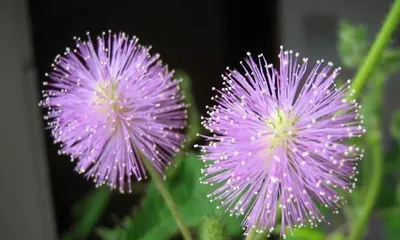In recent years, the Mimosa pudica has become one of the most popular indoor potted plants. However, many people are not aware of its toxicity and proper care methods. This article will delve into the toxicity of the Mimosa pudica and provide a detailed guide on its care, helping readers to better care for their own Mimosa pudica plants.

1. The scientific name for Mimosa pudica is "Mimosa pudica," and it belongs to the legume family, containing various beneficial substances.
2. Although Mimosa pudica is not considered a highly toxic plant, its seeds and leaves contain toxic components. Contact with skin or oral areas can cause allergic reactions.

3. The main toxic component is so-called "chitinase," which can cause symptoms such as skin itching, redness, blisters, and anaphylactic shock.
4. When caring for Mimosa pudica, it is important to prevent its seeds or leaves from coming into contact with human skin, especially for individuals with allergies.
5. The ideal temperature for growing Mimosa pudica is between 18-28°C. It should be placed indoors in a location with sufficient light, humid air, and a suitable temperature, and should not be placed in poorly ventilated areas.

6. Mimosa pudica requires plenty of sunlight, but during hot summer months, direct sunlight should be avoided to prevent leaf scorch.
7. Watering should be moderate; neither too much nor too little. Generally, watering once a week is sufficient.
8. To maintain healthy growth, a moderate amount of plant nutrients, such as fish emulsion and well-rotted organic fertilizers, can be applied.
9. If the Mimosa pudica is not growing well, it may be due to nutrient deficiency or overly compacted soil. In this case, you can replace the soil or loosen it appropriately.
10. Mimosa pudica can be propagated in many ways, such as by seeds, cuttings, or division. Choose the propagation method that best suits your needs.
11. When propagating by cuttings, pay attention to the size, freshness, and growth condition of the cuttings to avoid affecting the success rate of propagation.
12. Propagation by division can be done by separating the roots and transplanting them into new soil. This method has less impact on the plant's growth and development.
13. Mimosa pudica needs a period of dormancy in winter. At this time, measures such as reducing watering and lowering the temperature should be taken to ensure it safely overwinters.
14. When caring for Mimosa pudica, be sure to promptly remove fallen leaves, dead branches, and any pests or diseases to ensure healthy growth.
15. In summary, although Mimosa pudica is toxic, with proper care, it remains a beautiful and healthy houseplant. We can confidently grow it at home and enjoy the beauty it brings.